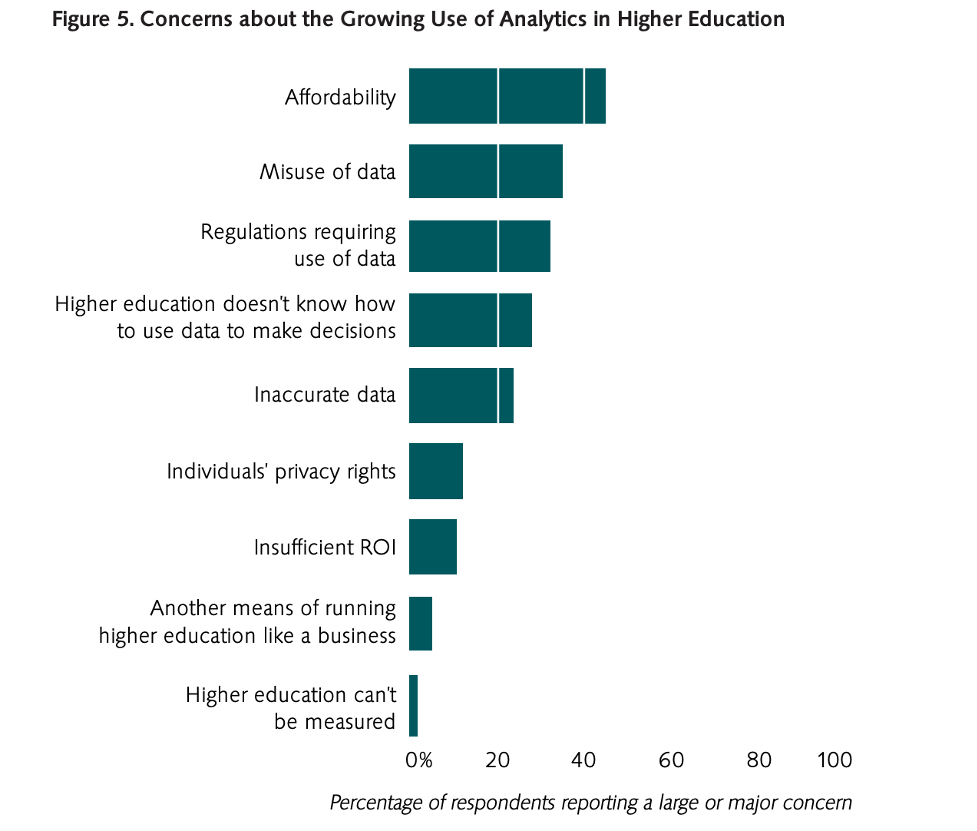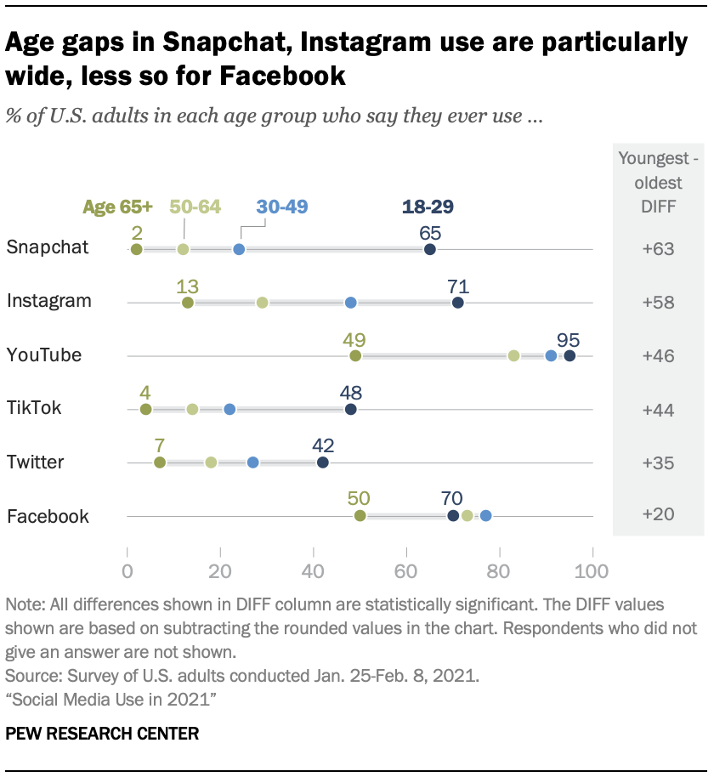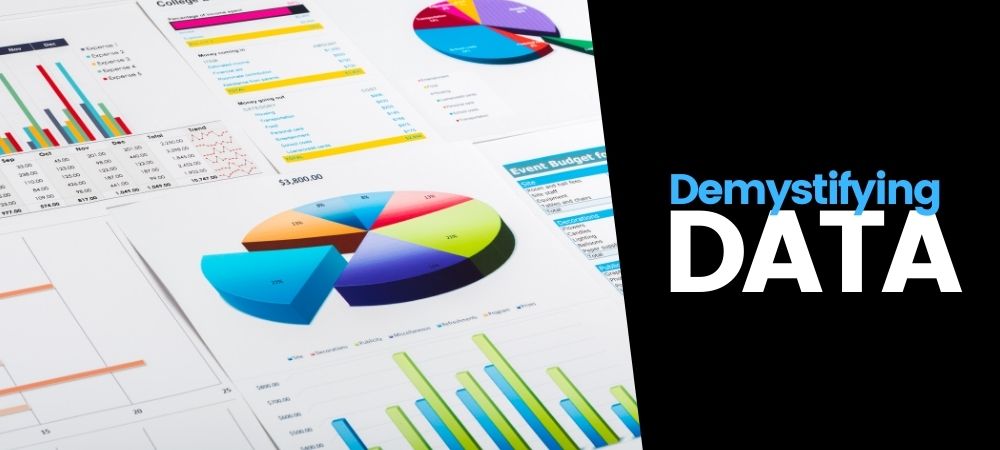If you’re in higher education and not using data to support your strategic enrollment decisions, you’re not alone but you’re seriously missing out.
The disconnect between data collection and data usage among colleges and universities has posed an industry problem for at least 10 years. Scattered silos, misaligned information systems, and an influx of raw, uncontextualized data have compounded the issue threatening to hold institutions back at a time when educational models are shifting and competition shows no signs of slowing down.

Confusion about how to use data in order to drive decisions has been a higher ed concern since (at least) 2012.
But while this disconnect is understandable, the fact remains:
Data is essential to higher ed optimization, particularly in admissions.
For those higher ed enrollment professionals hoping to get on the data train and begin implementing analytics-driven processes in earnest, here’s an overview of data, including what it’s good for, where to find it, and how to mine it for maximum results.
What’s data good for?
In our uber-digital age, much has been made of the power of data, capable of providing a virtual window into the lives of target audiences (both niche and wide).
With current technologies able to capture everything from where and when consumers buy their daily latte to how many literal steps they take in a day, it’s become much, much easier to keep your finger on the pulse of buyer behaviors and social trends.
Put in higher ed terms, the benefits of data allow admissions and affairs teams to:
- Uncover who’s listening by tracing prospect engagement across a variety of channels (such as emails, newsletters, social media, and websites) to evaluate when, where, and how your efforts are hitting their mark and to address gaps in coverage as needed.
- Take stock by measuring participation and/or gauging responses to marketing outreach campaigns, recruiting events, cold calls, etc., and filtering these findings through a panoramic lens. Zooming out in this way gives admissions teams an overarching sense of their audience as well as its typical pain points and desires.
- Recalibrate by gathering information at both micro and macro levels to refine messaging strategies for specific student profiles and to enhance branding narratives (to better attract ideal prospects).
- Improve ROI by spotlighting strategies, policies, and practices that have performed well in the past and utilizing this intel to inform future investments and budget planning.
All these methods amount to a simple yet powerful equation:
data = 360° knowledge of your prospects & processes = more efficient practices going forward
In short, data helps ensure your teams are never caught unprepared.
What does data look like?
Obviously, data comes in many forms, some of which can be more effective than others, depending on the task at hand. Here are just a few data features you should look out for when gathering info on prospective students, current enrollees, and/or in-progress campaigns:
Is it clean?
“Clean data” refers to data that’s been purged of all mistakes and inconsistencies to improve accuracy and remove extraneous information. As you collect your data, be wary of:
- misspelled names, addresses, or other demographic markers
- repeat entries/duplicates (such as surveys submitted twice or multiple email addresses on file for the same applicant)
- incomplete information or empty data fields (i.e., missing application files, questions left blank on teacher/staff evaluations, etc.)
- information that doesn’t seemt to fit (For example: if all your prospects are usually based in the Midwest but your records reveal a student lead from Hawaii, it’s pobably best to investigate the outlier.)
Is it numbers-driven or more conceptual?
Data typically fall into either a “qualitative” or “quantitative” category.
- Qualitative data offers findings that are less concrete, though no less valuable. It involves interpersonal information such as thoughts, feelings, and general assessments. (Think prospect interviews or in-depth email questionnaires.)
- Quantitative data is mostly a numbers game. These results are definitive, instantly quantifiable, and helpful for broad samplings like “All US Applicants” or “All Prospects Aged 16-20.” (Think multiple choice polling, financial aid figures, or enrollment numbers by year.)
Is it aligned with your goals?
Too much data isn’t necessarily a bad thing, but sometimes the information you collect has little to no bearing on what you’re trying to achieve. Wherever possible, discard data that are interesting but not essential. As the Educause Center for Applied Research recommends, start with the challenges you wish to tackle head-on, then craft your data and analytics around them.
That is, let data follow your objectives—not the other way around.
How should you collect data?
Exactly how you collect your data will hinge on your audience, your institution, and the resources you have available. Here’s some food for thought on how best to get started:
Look to social media and the web
With 85% of Americans now in possession of a smartphone and the vast majority of 18- to 29-year-olds reporting at least some form of social media use, it’s safe to assume much of your target demographic can be found online.

Percentages of social media use by age group from January 25 to February 8, 2021.
Consequently, web and social media platforms represent a goldmine of information that can be extracted using a variety of analytical tools. Some digital data points worth gathering include:
- Likes and shares
Though some may call these “vanity metrics,” they’re an excellent way to take interest-level temperatures on scheduled events, informative articles, graphics and logos, etc.
- Website engagement
This can cover any number of metrics, from how many prospects accessed your latest PDF brochure (download rate) to how far students scrolled through each of your webpages (scroll depth), how long prospects remain on your website (time on site), and which website visits generated verifiable leads (conversion rate).
- SEO performance
Check in on your search engine rankings for highly effective keywords within your field (“law school programs near me,” “vocational certificates in Seattle,” or “Colorado engineering degrees,” for example). This can offer extensive insight into which search terms are most likely to bring traffic, and through which channels (organic, social, paid, etc.). If your analysis indicates a certain keyword is trending up or down, you can use this information to reconfigure your content.
Engage inward
Want to know which issues are most important to potential enrollees?
Your institution just accepted a whole new class of students. Use them for guidance.
Need some inspiration? Set up one-on-one interviews, ask for feedback via email (you can even offer up a gift as an incentive), or conduct a Twitter poll. New students can provide a fresh perspective on admissions practices, if only because they’ve recently experienced them firsthand.
Test, test, and test some more
Savvy admissions officers like Joy McClure of Tricoci University support their marketing programs with split or A/B testing, stockpiling data by recording consumer activity for two separate iterations of a landing page, photo slideshow, satisfaction survey, or any other promotional asset.
Testing is crucial for tracing and anticipating user trends. With this in mind, McClure employs A/B test results to determine which of her team’s marketing methods are most impactful: from text message subject lines to call-to-action button displays, image placement, and beyond.
“Testing allows us to provide customized messaging based on behaviors that will hopefully…improve engagement,” McClure says, adding, “It doesn’t matter whether we like it; it comes down to performance.”
What do you do with data once you get it?
Cold, hard data never did anyone much good on its own. After you’ve collected all relevant info applicable to your institutional goals, be sure to:
- Put it in one place
A centralized data headquarters is always advisable to help facilitate easy search and access. Keeping all your intel in a single location can also enable quick cross-referencing among data sets to help enrich reporting (like when you want to review applicants by age and state, say). - Analyze it from various angles
Data can be examined and repurposed in myriad ways. Take time to consider how your data should be harnessed in support of school-wide aims. Do you want to analyze enrollments by program according to the time of year? Assess email open rates for an exclusive subset of prospects? Review cost-per-conversion figures ahead of your next budget meeting?
The choice is yours. Just be sure you’re mining actionable intelligence from your data, rather than letting it languish on an unused server. - Make a move
Once analysis is complete, use your findings to dictate next steps. Discovered one of your blog posts isn’t generating much interest? Try running a new one that’s been optimized with higher-performing keywords. Noticed enrollments suffered a setback around Christmas? Organize a holiday-themed newsletter to keep student leads warm during the drought.
The end game of data is to make improvements based on demonstrable evidence. If you don’t take action according to the information you’ve collected, you’ll be wasting everyone’s time and keeping your teams at a standstill. Worse? You’ll be throwing revenue- and enrollment-boosting opportunities away.









